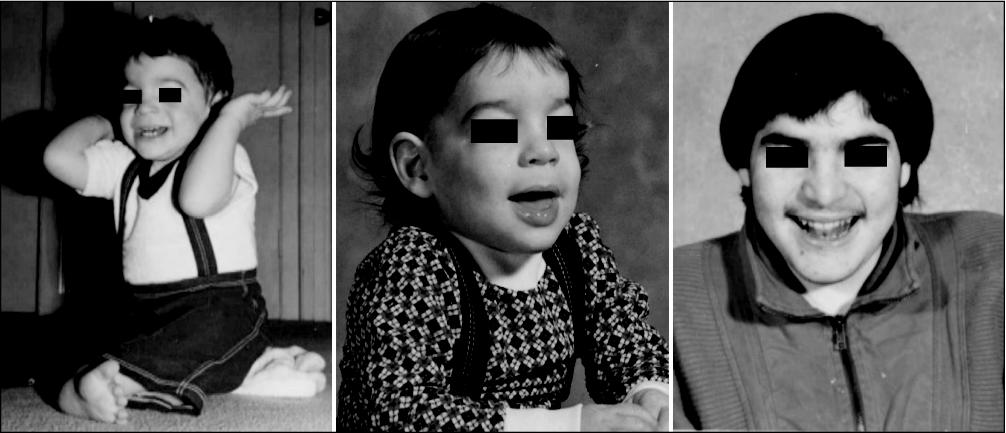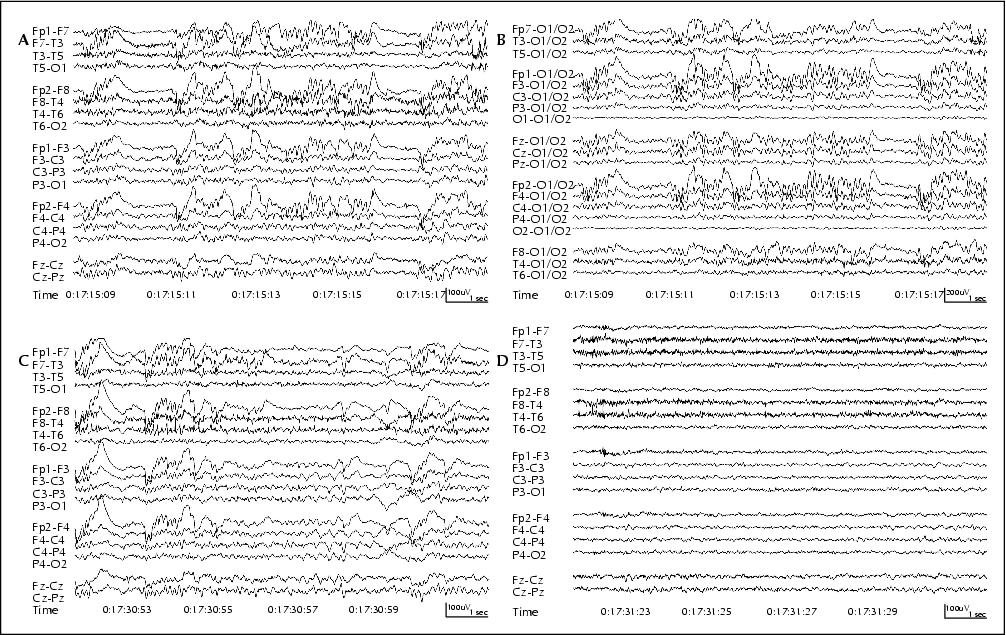Epileptic Disorders
MENUAtypical absences and recurrent absence status in an adult with Angelman syndrome due to the UBE3A mutation Volume 7, issue 3, September 2005

Figure 1 Pictures taken between 1-1.5 years (left and middle) and 15 years of age (right). Note the incipient but characteristic arm flapping (left only), subtle prognatism, tendency for tongue protrusion, and a happy disposition, the appropriateness of which cannot be ascertained here.

Figure 2 A) Ictal EEG changes associated with the atypical absences showed frontally predominant bursts of rhythmic alpha frequency activity (8-9.5 HZ) lasting from 0.5 to 2.5 seconds, occasionally with a recruiting/derecruiting pattern; the ictal EEG bursts were associated with subtle head extension, eyelid blinking (myoclonia), upward eye deviation and arrest of stereotypic hand flapping movements. B) The rhythmic ictal activity could be differentiated from eye flutter artifact by the presence of a subtle, recruiting/derecruiting pattern most evident with the longest bursts, and by the posterior extent of the ictal scalp topographic field when the same EEG sequence was reformatted to a common balanced occipital (O1-O2 average) referential montage. This montage showed the ictal activity extending back to the centroparietal region bilaterally with a gradual amplitude decrement from FP1/FP2 to F3/F4 to C3/CZ/C4 and a much greater fall off to P3/PZ/P4. C) Throughout an entire 2 hours-epoch of absence status, the EEG background activity was markedly different from the background activity recorded immediately before (not shown) and D immediately after the long clinical episode of absence status, with a large increase in generalized slow wave activity interspersed between the repeated bursts of rhythmic ictal activity.EEG in C is from late ictal phase. EEG in D is 30 seconds later, immediately postictal.

